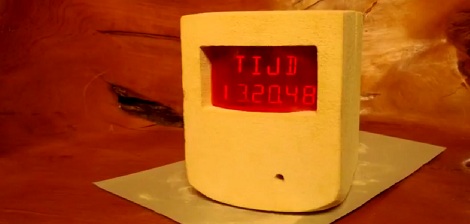
So here’s the scenario. You’re the boss and everyone needs to kiss up to you speak with you about important project details. You need a receptionist, or a creative employee who will build a calendar display the lets people check if you’re free to chat. It works by querying a Microsoft Exchange server for the guy’s calendar. The hardware within doesn’t deal directly with the full Exchange API, but relies on a server-side script that feeds it info on request. This is a nice touch since you can do a lot of filtering on the server and keep it simple with the embedded electronics
Speaking of embedded hardware, this uses Gadgeteer modules. You probably don’t remember, but these are Microsoft’s electronic modules aimed at C# and .NET programmers. It uses the main board, and LCD, USB host, and Wifi modules. This is the first project we remember seeing since the hardware was announced.
We wonder if this will change the boss’ behavior? Will he start scheduling creatively so that he gets more time without interruption?
















